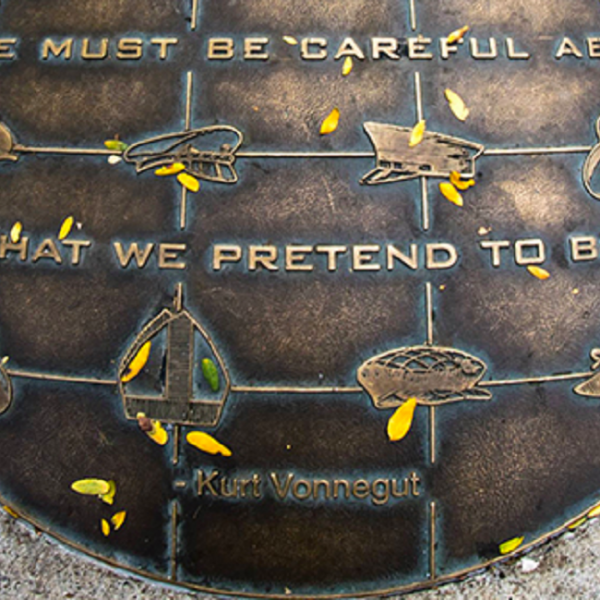John Sutherland on Jane Austen

John Sutherland
From the popular new series of YouTube vlogs, “The Lizzie Bennet Diaries” to the recent rash of Austen-inspired self-help books, Jane Austen mania shows no sign of slowing down in 2012. In Lives of the Novelists: A History of Fiction in 294 Lives, John Sutherland reflects on why Jane continues to seduce us. Don’t forget to enter the book giveaway on Goodreads before it closes at the end of the month!
John Sutherland—
One of the many books about the author in 2009 – certainly the bestselling of them – was Jane’s Fame: How Jane Austen Conquered the World, by Claire Harman. If Harman’s unstuffy chronicle of Jane Austen’s reputation told the reader anything it was that the ‘Lady’, as she titled herself, who wrote Pride and Prejudice, had come a long way since 1813, when that novel barely cleared a few hundred copies of its first edition. In the last twenty years, Harman plausibly suggested, Jane Austen had ‘conquered the world’. She was no longer a writer but a phenomenon, a ‘brand’, a celebrity author. Jane Austen is to fiction what Coca-Cola is to fizzy drinks.
Thirty years ago, when that world-domination was still a year or two in the future, an American professor, Warren Roberts, published a monograph entitled Jane Austen and the French Revolution. It was met with uproarious mirth. If a person knew anything about Austen it was that she never mentions the French Revolution. The New Statesman ran a competition inviting similarly ludicrous combinations: ‘E.M. Forster and Bodybuilding’ and, famously, ‘Martin Amis: My Struggle.’ Professor Roberts was, however, making a serious point. We repress things which are so important to us that we dare not be conscious of them: the French Revolution was Jane Austen’s elephant in the room. Nowadays, we are much more interested in a different pachyderm in the Austen parlor. What, in June 2009, when Harman’s book was published, was the most looked-at item in Austeniana? With A-levels coming up, you might guess the Penguin Classic Pride and Prejudice, or possibly the DVD of the delightful skit, Lost in Austen. Wrong. It was a video, Porn and Penetration: a ‘knock-off”, as the porn and penetration trade calls them.
By the blood-curdling standards of contemporary pornography, P&P was harmless burlesque. A troupe of actors in high Regency dress did a series of scenes which, at first sight, looked exactly like those of Andrew Davies screen adaptation. But then they go a tiny step further. Only one scene, involving Elizabeth Bennet and a billiard table, veered into the mildly distasteful. One did not expect a learned monograph entitled ‘Jane Austen and Copulation’, even from the dry highlands of American academia. But the point being made by the saucy makers of Porn and Penetration was the same as that made by unsaucy professor Roberts. Namely, that it is the missing bits which fascinate us most about Austen.
 All six novels are about the rocky road to a young woman’s happy marriage. Seducers lie everywhere in ambush: Frederick Tilney, George Wickham, John Willoughby, Frank Churchill, William Elliot – predators all. But the novels are, on the face of it, wholly uncarnal. The nearest we get to a sex scene is when Willoughby (sly devil) fingers Marianne Dashwood’s sprained ankle with rather more interest than the injured joint might be thought to require by any other than the Barton Park physician. In the background of the narratives, of course, the prurient ear can usually detect some suspicious rustling. ‘Coltish’ Lydia Bennet, we surmise, is bonking everything in a red coat in the garrison town of Meryton (apt name). But Miss Austen primly averts her eyes from such goings on and keeps the narrative attention firmly focused on the teacups at Longbourn.
All six novels are about the rocky road to a young woman’s happy marriage. Seducers lie everywhere in ambush: Frederick Tilney, George Wickham, John Willoughby, Frank Churchill, William Elliot – predators all. But the novels are, on the face of it, wholly uncarnal. The nearest we get to a sex scene is when Willoughby (sly devil) fingers Marianne Dashwood’s sprained ankle with rather more interest than the injured joint might be thought to require by any other than the Barton Park physician. In the background of the narratives, of course, the prurient ear can usually detect some suspicious rustling. ‘Coltish’ Lydia Bennet, we surmise, is bonking everything in a red coat in the garrison town of Meryton (apt name). But Miss Austen primly averts her eyes from such goings on and keeps the narrative attention firmly focused on the teacups at Longbourn.
But was she little Miss Prim? There was controversy in the Times Literary Supplement recently (those damned professors) about the passage in Mansfield Park in which Mary Crawford recalls: ‘Certainly, my home at my uncle’s brought me acquainted with a circle of admirals. Of Rears and Vices I saw enough. Now do not be suspecting me of a pun, I entreat.’ It is hard to think that a woman as smart as Jane Austen, with brothers serving in the rum-bum-and-lash eighteenth-century navy, with a father who, despite his dog collar, was broad-minded enough to let his daughters read Tom Jones, would perpetrate such a double entendre, unknowingly.
Austen is to fiction what Elizabeth I was to the throne of England: a virgin queen. But did she not have sexual longings? The film Becoming Jane pondered that question with much heaving of bosom. Why did Jane, after a sleepless night, refuse the one offer of marriage we know her to have received? Did Jane remain single to preserve herself for fiction? Did she die virgo intacta? Was she, perish the thought, Sapphic by preference? ‘Was Jane Austen Gay?’ the London Review of Books (those damn professors again) asked, in a 1995 headline. Jane and Cassandra shared a double bed. And what else? The facts about Austen’s life were ruthlessly sanitised, post mortem, by surviving relatives. Her brother Henry wrote the skeletal mini-biography on which every maxi-biography has since depended. The facts that we do have are readily summarized.
Throw it all into the pot and the conclusion is that we know little more about Austen than about Shakespeare. With both writers, the biographical vacuum around their work has done no harm whatsoever. Arguably, with the very greatest writers (to paraphrase Walter Bagehot on monarchy): ‘We must not let daylight in upon the magic.’
John Sutherland is Emeritus Lord Northcliffe Professor of Modern English at University College London. Excerpted from Lives of the Novelists: A History of Fiction in 294 Lives © 2011 by John Sutherland.



